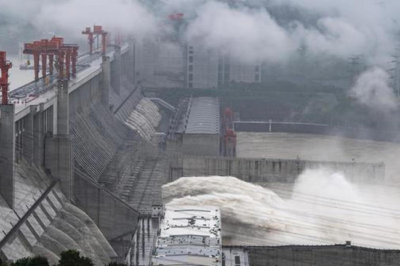
India has unequivocally opposed China’s plans to build the world’s largest hydropower dam on the Yarlung Tsangpo River and its creation of new administrative counties in the disputed region of Ladakh. These developments pose challenges to territorial sovereignty, water security, and environmental sustainability, underscoring growing tensions between the two nations.
Key Concerns
1. Yarlung Tsangpo Hydropower Dam
- Strategic and Ecological Risks:
China’s proposed dam could generate three times the energy of the Three Gorges Dam, significantly increasing its leverage over the Brahmaputra River, a lifeline for India’s northeastern states and downstream Bangladesh. - India’s Reaction:
- Ministry of External Affairs (MEA) spokesperson Randhir Jaiswal highlighted concerns over China’s lack of consultation and emphasized India’s established user rights.
- India called for transparency and consultation, warning of far-reaching repercussions if China unilaterally controls or diverts the river flow.
2. Creation of New Counties in Ladakh
- Expansion of Hotan Prefecture:
China’s establishment of new administrative counties in the Xinjiang region, including areas claimed by India’s Ladakh, has been met with strong diplomatic protests. - India’s Stand:
- The Indian government rejected these changes as illegitimate, reaffirming its sovereignty over Ladakh.
- Jaiswal reiterated, “China’s unilateral actions will not lend legitimacy to its forcible occupation.”
Broader Implications
China’s Growing Presence in Tibet
- China has been heavily investing in infrastructure projects, especially in Tibet, to consolidate control. The Yarlung Tsangpo Dam alone is estimated to cost $127 billion, raising concerns about:
- Environmental Damage: Displacement of communities and destruction of sensitive ecosystems on the Tibetan Plateau.
- Human Rights Violations: Crackdowns on Tibetan dissent, with reports of protestors detained and abused in 2024.
India’s Geopolitical Calculations
- As a lower riparian state, India is wary of China gaining control over the Brahmaputra, a river vital for agriculture, drinking water, and energy production.
- Both water security and the territorial disputes in Ladakh are now part of India’s broader regional stability strategy.
Conclusion: The Way Forward
India’s firm diplomatic protests signal a resolve to safeguard national sovereignty and regional stability while holding China accountable for adhering to international norms. As tensions rise, cooperation through multilateral forums or bilateral negotiations becomes crucial to ensuring equitable resource sharing and peaceful coexistence.
Curious Corner:
Can diplomacy strike a balance between development, environmental conservation, and territorial integrity in the evolving India-China relations?
4o









































Leave a Reply